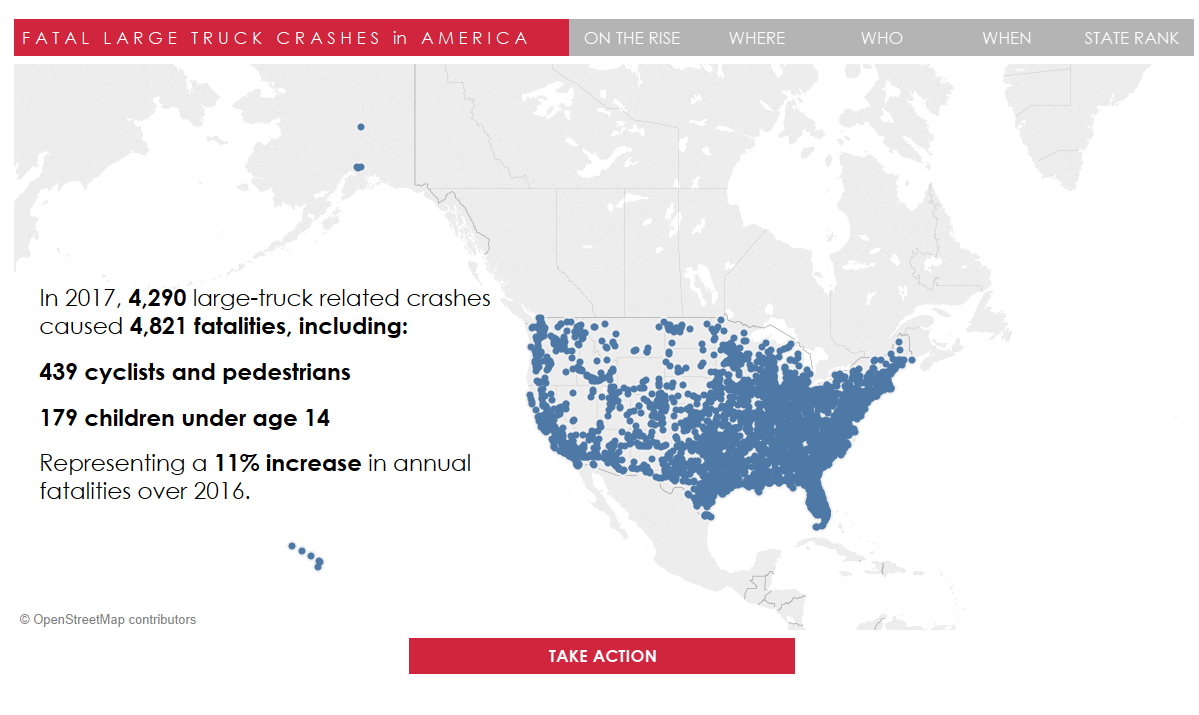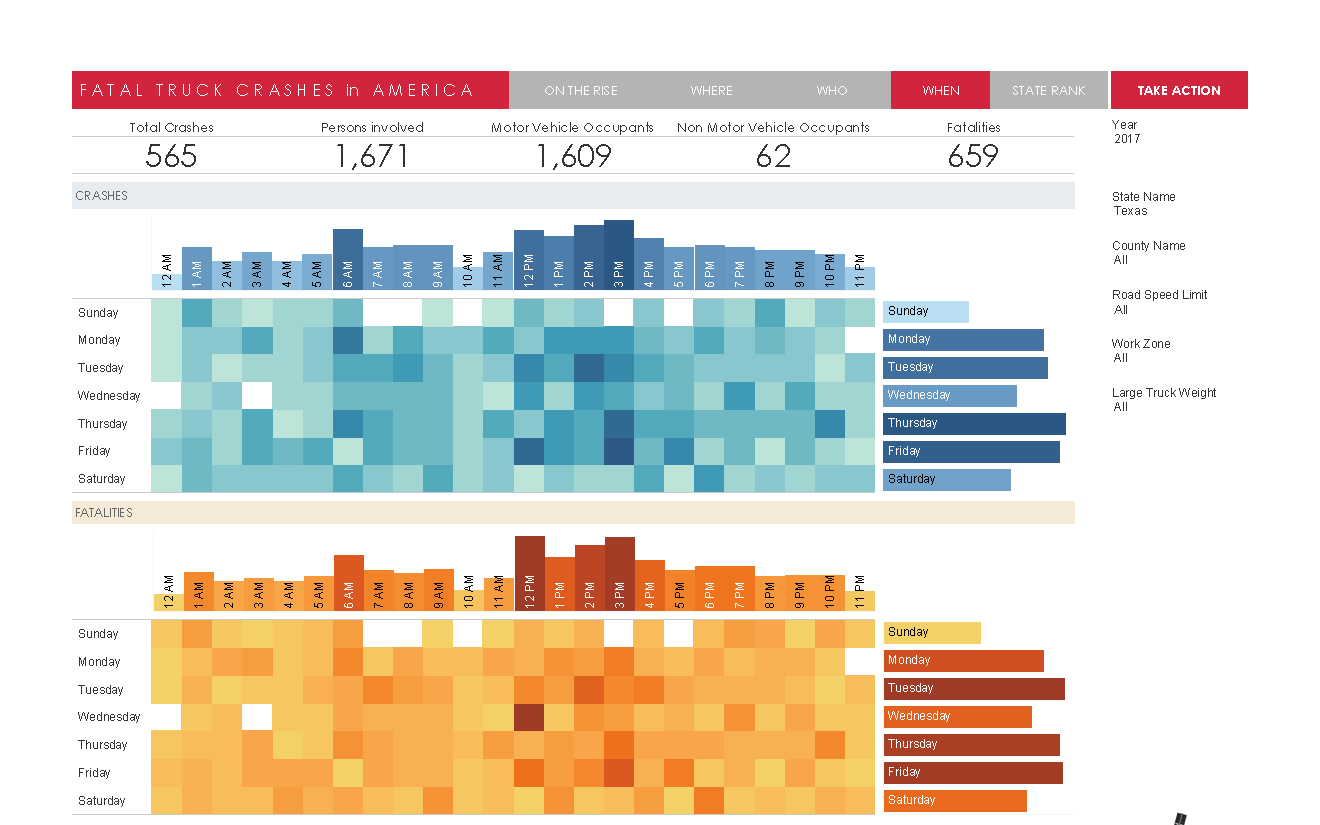Client
Truck Safety Coalition
Market
Non-profit
Industry
Trucking
Offerings
AI and Analytics
The Truck Safety Coalition (TSC) is a non-profit organization that works to reduce preventable truck crash deaths and injuries by advocating for safer drivers and vehicles.
To effectively communicate the volume and related fatalities of truck-related crashes to the public, policy-makers, and the media, TSC relies on volumes of disparate public data collected and stored by the Department of Transportation. Buried in disconnected tables and PDFs lies critical information about fatalities, injuries, accident locations, and more, from every state and county across the US.
Truck Safety Coalition: On a Mission to Save Lives with Data
From 2009 to 2017, truck-related fatalities went up 41%, while 44 states reported more truck crash deaths in 2017 than in 2009.
“Sadly the trends in truck safety are all going in the wrong direction,” said John Lannen, Executive Director of the Truck Safety Coalition (TSC). The non-profit organization tracks truck crash data to help educate the public and lawmakers on the very real, but often underreported, dangers of large truck accidents. “When a plane crash, or even a train crash happens, it’s headline news—it’s tragic. The equivalent for a truck is like a plane crash happening every week, but nobody knows about it,” said Lannen. For TSC, data is key to revealing just how serious the problem is. Lannen shared that if reporters, lawmakers, and the public could more easily view the data, they would not only be surprised by the numbers, they would be better informed about the realities of truck safety.


Excella worked with the TSC team to focus on key stakeholder groups and identify the critical questions they would want to explore in the dataset. Then, working with the data blended from various FARS sources, the team built a quick prototype dashboard centered on a map view of all accidents – a key ask from the TSC team relevant across stakeholder groups.
Through a series of design reviews, the Excella team iterated on the initial prototype to develop the final dashboard. The team also identified additional interactivity features and secondary data sources that could be used to normalize data for cross-state comparisons, improving the usability of the tool. The TSC team brought in-depth knowledge of the data and could quickly eyeball anomalies and help to refine how age groups and fatality types were grouped.
In just two months, the Excella team produced a tool that was over three years in the making that included millions of pieces of data from multiple sources. The visualization tool is easily maintained by the Truck Safety Team and gives them the ability to change minds and possibly save lives.




